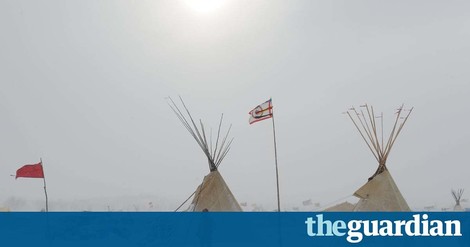Your podcast discovery platform
Curious minds select the most fascinating podcasts from around the world. Discover hand-piqd audio recommendations on your favorite topics.

piqer for: Climate and Environment
Pamela works as a Press & Communications Manager for an international NGO (IWGIA) defending indigenous peoples' rights. She holds an Erasmus Mundus MA in Journalism, Media & Globalisation from Hamburg and Aarhus University and an MA in Political Science from the University of Buenos Aires. She will be putting the eye on international media coverage of indigenous communities and their demands.
Why Standing Rock Is About Much More Than Oil
One thing is gaining clarity: land rights issues between indigenous communities and governments go far beyond an environmental dimension, even if mainstream media won’t dig into it.
Protests around the world are demonstrating that indigenous peoples' relation with land is unique. Land rights are of fundamental importance to indigenous peoples since they constitute the basis of their economic livelihood and are the source of their spiritual, cultural and social identity.
In opposition to the capitalistic Western idea of land as a material possession, indigenous peoples conceive land ownership as a holistic system tied to their ancestral values. Therefore, messing up indigenous land impacts their worldview, way of life and ultimately their survival.
North Dakota marks an intersection between religion and environment.
In the Missouri River, indigenous Water Protectors have tried to prevent the Dakota Access Pipeline from passing through a sacred landscape. Sacred places have been purposefully targeted: the Mount Rushmore monument in South Dakota was built over the Black Hills (Ȟe Sápa), the holiest site in Sioux religion; and Waconda Spring, Kansas, was submerged under the Glen Elder Dam.
These projects have a direct impact on their values as distinctive cultures. At the centre of their traditions is the understanding of nature as an animated being. Indigenous peoples' relation to their surroundings is built on a strong oral tradition of stories about creation, animals and natural phenomena.
As described by Floris White Bull, a Native American Water Protector in North Dakota:
“Those are our synagogues. Those are our Eiffel Towers, our pyramids. When you look out at the land, you don’t see anything like [Turtle Island]; how it comes out of the ground. Everything about us is with the Earth, including our [sacred] sites”
Perceiving the Standing Rock conflict in a religious context may bring insight into the failures, limitations and damages caused by Western development.
Stay up to date – with a newsletter from your channel on Climate and Environment.
